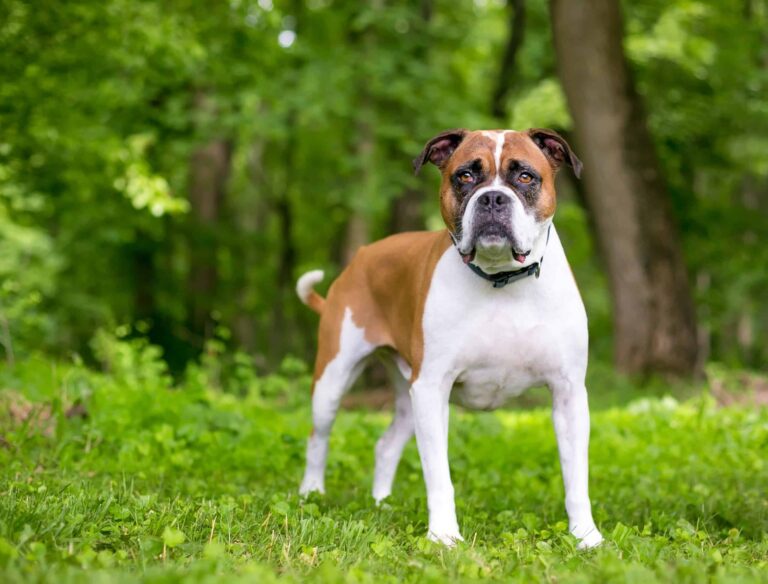Valley Bulldog Dog Breed
The Valley Bulldog hails from the Annapolis Valley and is a crossbreed that combines the Bulldog’s determination with the Boxer’s lively spirit. This breed may not be as famous as its parent breeds, but it has qualities that make it a charming pet and a sturdy member of the dog world.
Valley Bulldogs have a muscular build and a friendly nature, drawing in those who want a physically powerful, emotionally tuned dog.
These dogs are versatile and can thrive in many different home settings, and they are known for their smarts. Regarding their upbringing and health, it’s essential to consider how their active nature and mixed background could affect their needs.
The Valley Bulldog is a breed that requires understanding and care to ensure they lead a balanced and happy life.
Key Takeaways
- The Valley Bulldog originates from the Annapolis Valley, a mix of Bulldog resilience and Boxer energy.
- This breed is friendly and robust, suited for various households.
- Valley Bulldogs are intelligent; their hybrid vigor influences their care.
Originating from the Annapolis Valley, the Valley Bulldog blends the Bulldog’s tenacity with the Boxer’s vivacity. Boasting a robust physique and a friendly temperament, this breed adapts well to diverse living situations. Owners should note the intelligence and hybrid nature of Valley Bulldogs and tailor their care accordingly.
Quick Facts About the Valley Bulldog
The Valley Bulldog is a mix of Boxer and English Bulldog, known for its solid yet compact frame. Adults typically stand 12 to 25 inches tall and weigh between 50 to 125 pounds. Originating from Nova Scotia’s Annapolis Valley, this breed combines the Boxer’s strength with the English Bulldog’s distinctive build.
This breed’s size makes it adaptable to small and large living spaces. The Valley Bulldog has the Boxer’s energy and the English Bulldog’s sturdy form. This mix creates a dog that’s active but easy to handle.
Known for their friendly nature, Valley Bulldogs are great with people and other animals. They’re excellent family pets. But they need daily exercise to stay healthy in body and mind. They may also face skin and respiratory issues, so regular vet care is essential.
Valley Bulldog Pictures
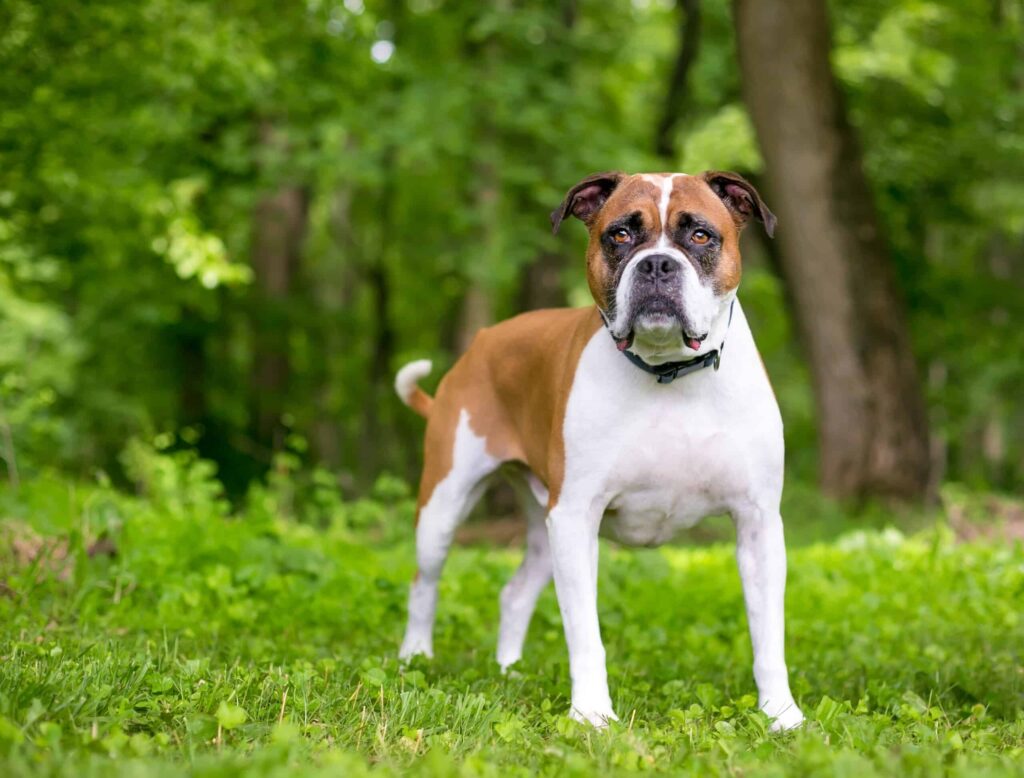
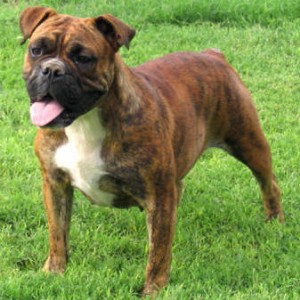

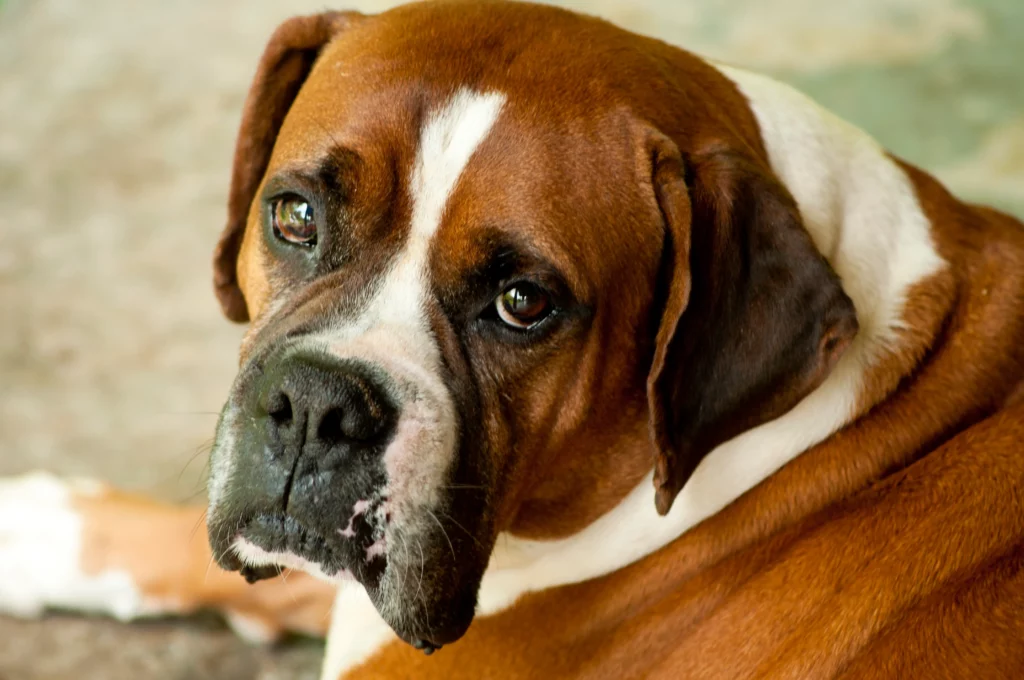

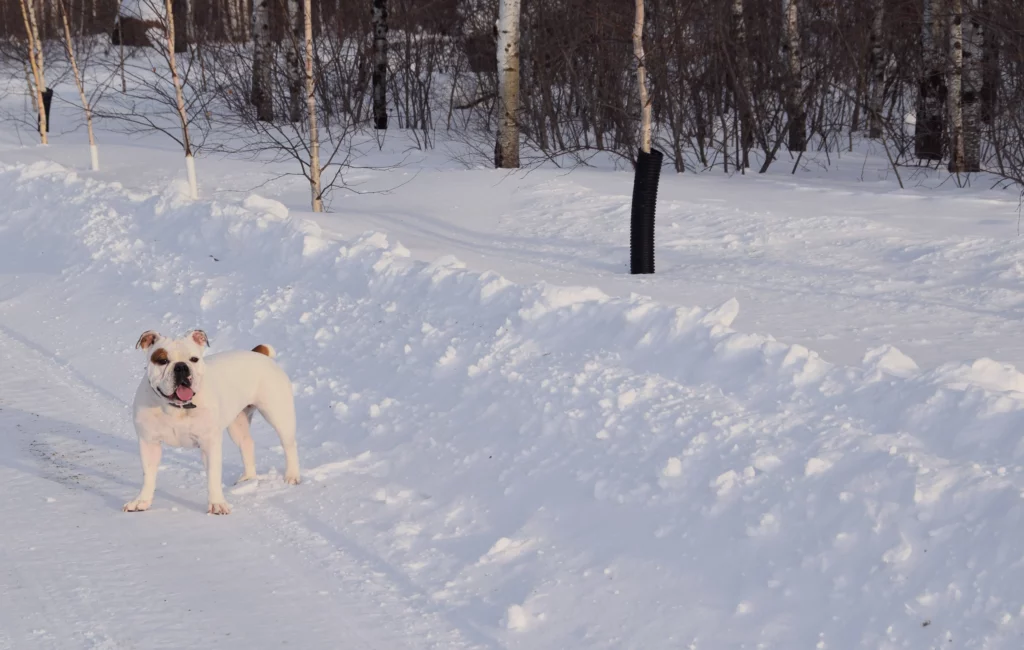
Owning a Valley Bulldog: Overview
Valley Bulldogs are an excellent match for apartment living due to their calm nature and moderate need for exercise. Hailing from Nova Scotia’s Valley, they are well-suited to the smaller spaces of city homes, ensuring their happiness is not compromised. These dogs are generally quiet, perfect for maintaining peace in close-knit apartment settings.
The physical size and behavior of Valley Bulldogs are critical factors in their aptness for apartment life. They seldom bark excessively, helping to keep the noise down in tight living spaces. With their moderate energy, a few daily walks and some playtime in a secure spot are enough to keep them content and well-behaved.
Valley Bulldogs can handle being alone for periods, which benefits owners with busy work schedules. They enjoy company but don’t get overly anxious when left alone, which helps to prevent destructive behavior or continuous barking.
Dog Breed’s Key Traits

Valley Bulldogs are the perfect mix of brawn and affection, making them ideal for various home setups. These dogs are strong with a muscular build yet have a reputation for being loving and gentle, which makes them great for families who like to stay active or cuddle on the couch.
When choosing a Valley Bulldog, especially for apartment living, looking at their ability to adapt, energy level, behavior, and temperament is essential. They’re highly flexible regarding different living spaces and can do well in smaller apartments. Their energy levels are moderate, meaning they’ll enjoy a good walk but won’t mind lounging around at home.
Valley Bulldogs are often quiet and well-mannered, which is excellent for keeping the peace with neighbors. They’re also known for their gentle nature, forming strong bonds with kids and adults.
Before bringing a Valley Bulldog into your home, consider how well they handle being alone and your experience with dogs to ensure everyone’s happy and healthy.
Breed History
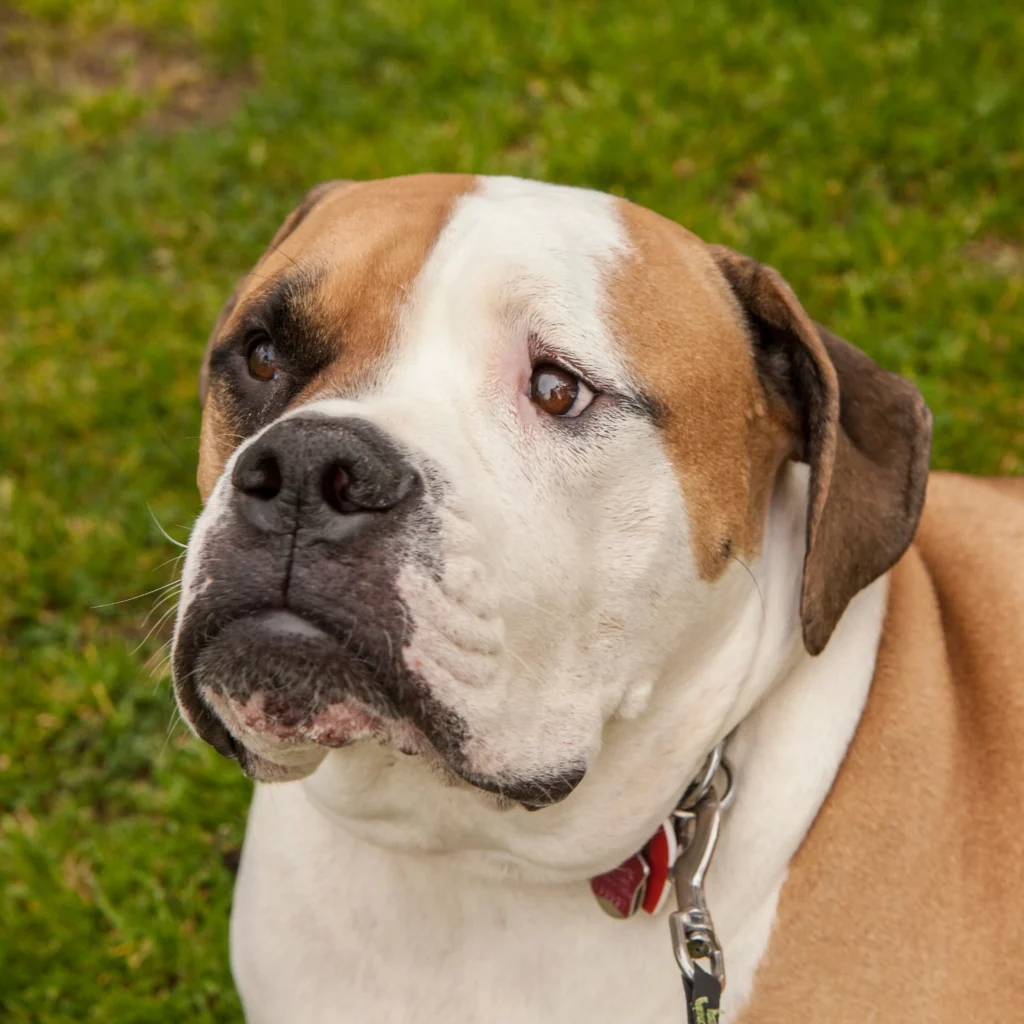
The Valley Bulldog is a unique breed that emerged from combining Boxer and English Bulldog lineages. This intentional mixing aimed to create a dog with the desirable qualities of both parents. A sturdy dog resulted from this crossbreed, known for its muscular build, strength, and versatility. The breed was shaped over time by the demands and preferences of Nova Scotia’s residents, which influenced its breeding and led to the distinct personality and standards we see today.
Valley Bulldogs reflect a history of thoughtful breeding within Nova Scotia’s local communities. Their development was driven by practical needs, leading to a breed with a consistent temperament. This breed stands out for its ability to adapt to various environments and work alongside its human companions.
Ancestral Roots
In the scenic Annapolis Valley of Nova Scotia, the Valley Bulldog breed was born from intentionally mixing the Boxer and English Bulldog. This combination was meant to merge both breeds’ best features and personalities.
With its sturdy build, wide head, strong neck, and broad chest and shoulders, the Valley Bulldog results from this careful breeding. These dogs have bright and easy-to-train qualities from the Boxer and the friendly nature of the English Bulldog.
The Valley Bulldog is a great pet that can be an alert guard dog and a loving part of the family.
Genetic Blend
The Valley Bulldog is a special breed created to combine the strengths of its ancestors. It combines the Boxer’s athleticism and energy with the Old English Bulldogge’s friendly nature and sturdiness. This dog has a muscular body, a broad head, and a large chest. Various dog organizations, like the International Designer Canine Registry, recognize it.
The Valley Bulldog is a well-rounded pet, ideal for many homes because of its mix of qualities. This breed is a testament to thoughtful breeding, showcasing the best traits of the Boxer and the Old English Bulldogge. The Valley Bulldog’s muscular build and friendly demeanor make it an excellent choice for families or individuals looking for an active yet affectionate companion. Its recognition by breed registries reflects its growing popularity and the success of this intentional breeding strategy.
Historical Development
The Valley Bulldog has its roots in the fertile Annapolis Valley of Nova Scotia, where it was crafted from the sturdy genes of the Boxer and the English Bulldog. Created in the 1950s, these dogs were bred for their ability to work on farms and help with cattle, drawing on their strong heritage to excel in such tasks.
With its muscular frame and powerful legs, the Valley Bulldog can easily handle demanding work. This breed is now recognized by specific canine organizations, such as the Designer Dogs Kennel Club, which sets standards for size, build, and personality.
Over time, breeders have focused on enhancing the friendly and trainable nature of the Valley Bulldog, making it an excellent choice for both farm duties and as a loyal family pet. They are known for their impressive build, including broad shoulders and a large head, combined with a lean body that allows them to be both agile and robust.
This balance of traits makes them well-suited for active roles and affectionate companions in the home.
Medium Build Parameters
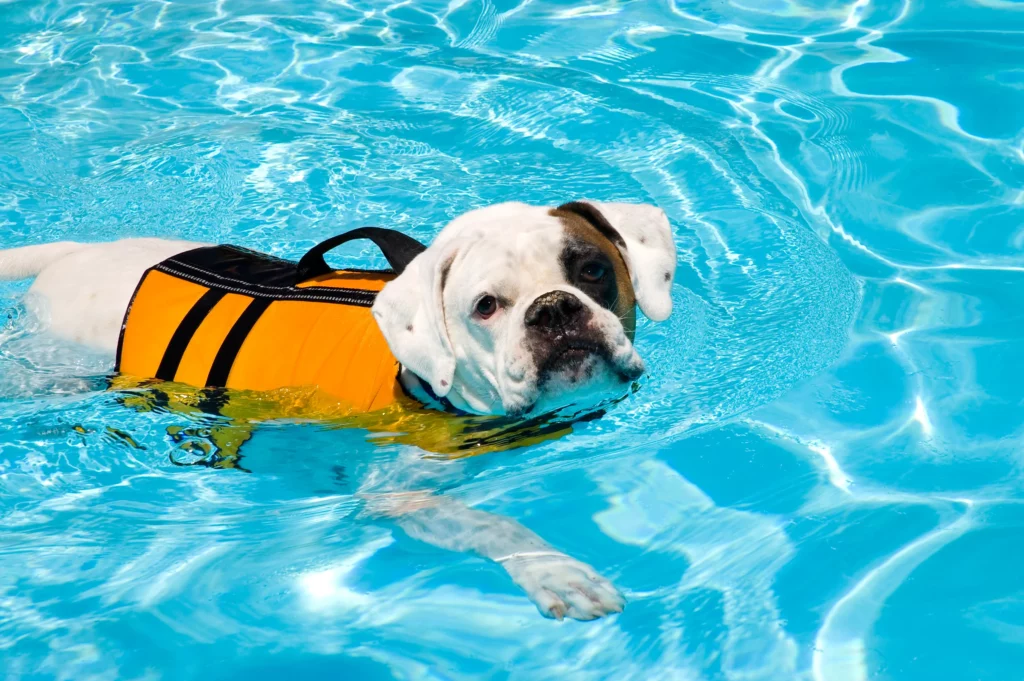
The Valley Bulldog boasts a physique that is well-proportioned to its medium size. A Valley Bulldog should weigh between 50 to 125 pounds when considering health and fitness. The right balance of muscle and fat is critical to maintaining this weight range.
At a height of 12 to 25 inches, the Valley Bulldog’s growth and development must be monitored to prevent undue strain on their joints. Maintaining a healthy body composition for these dogs is essential, as it directly affects their mobility and overall well-being.
Ideal Weight Range
The best weight for a medium-sized Valley Bulldog is between 50 and 75 pounds (22.7 to 34 kg). This depends on the dog’s gender, bone structure, and muscle condition.
Keeping a Valley Bulldog at a healthy weight is vital for their lifespan and overall well-being. Weights above 75 pounds can lead to health problems similar to those seen in overweight people, such as issues with joints, metabolism, and the heart. On the other hand, a weight under 50 pounds could mean the dog isn’t eating enough or might be sick.
Dog owners should monitor their Valley Bulldog’s weight, ensuring they eat and exercise enough to stay healthy.
Height Considerations
A Valley Bulldog’s height is typically between 12 and 25 inches at the shoulder. This measurement confirms their status as a medium-sized breed.
A Valley Bulldog’s build is sturdy and compact, making them suitable for various homes, including smaller spaces like apartments. Their size is convenient for indoor living, but they still need regular exercise to stay healthy and happy.
Body Composition
Valley Bulldogs are medium-sized canines known for their muscular physiques. Their features include a broad head, neck, chest, and shoulders, which give them a solid and impressive look. The breed’s thick neck is critical to supporting its heavy, square-shaped head, adding to its physical agility and power.
However, this sturdy build can make them more susceptible to joint issues like hip dysplasia, often seen in larger dog breeds. Responsible breeding and careful weight control are vital for preventing this condition and keeping a Valley Bulldog in top shape.
Muscle Versus Fat
Understanding the balance of muscle and fat in Valley Bulldogs is vital for their health. These dogs should have a strong muscle presence to support their medium build. They are known for their muscular frame, broad head, deep chest, and powerful jaws, indicating they are built for strength. A lean body helps the dog move well and stay active.
A balanced diet and regular exercise are essential for Valley Bulldogs. This helps keep their muscle mass up and prevents obesity, which can cause health problems. Keeping these dogs fit and strong is vital for their well-being.
Growth Milestones
Valley Bulldogs are mixed-breed dogs with significant growth milestones for assessing their health and development. As a cross between the Boxer and English Bulldog, these puppies typically grow to a medium size. Tracking their growth helps identify health issues early, especially joint conditions that Bulldogs are prone to.
Owners should chart their Valley Bulldog’s weight, height, and overall body condition. Regular visits to the vet are essential to catch and treat any health concerns during the dog’s growth period.
Temperament Traits of Bulldog Breed
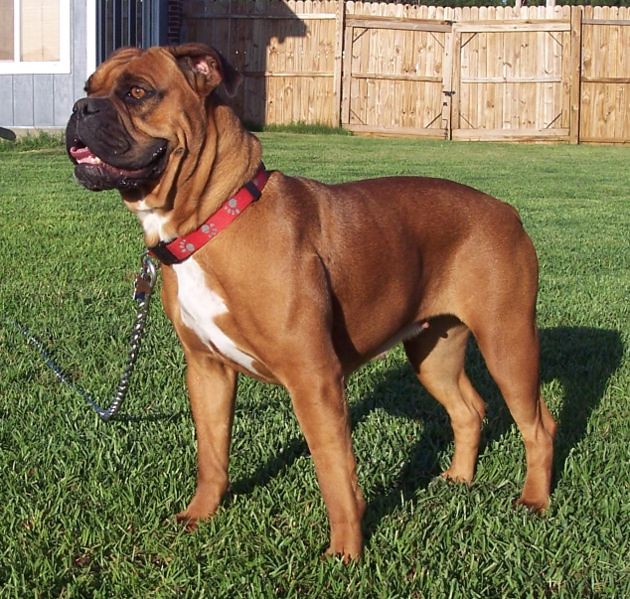
The Valley Bulldog is known for its temperament, significantly shaping how it interacts with people and surroundings. These dogs are incredibly affectionate, making them ideal companions for families and creating a solid bond with their human counterparts. They also possess a high level of playfulness, ensuring they are always up for fun activities and games.
Valley Bulldogs naturally tend to be protective, making them reliable and watchful defenders of their household. Because of these traits, Valley Bulldogs fit well in many home environments, but they require regular training and socialization to ensure they are well-behaved and sociable pets.
Affectionate Family Companion
Valley Bulldogs are prized for their even-tempered nature, making them perfect household pets. They’re intelligent, easy to train, and love being around people, which makes them friendly and well-behaved family dogs. These dogs are relaxed and kind and great with kids and other pets. They quickly become an integral part of the family thanks to their ability to form strong connections with their owners.
These Bulldogs enjoy having fun and often display a playfulness that adds joy to any home. They’re also alert and have an instinct to protect their family. To keep a Valley Bulldog happy and healthy, they need to get regular physical activity. This helps them stay fit and content, ready to be your loyal companion.
Playful Energy Levels
Valley Bulldogs are known for loving nature and fitting perfectly into family life. They have a lot of energy and need regular activity to stay happy and healthy. This breed loves to play, especially with kids, and thrives on interaction. Daily walks and playtime are essential to keep their minds and bodies in shape. If they don’t get enough exercise, they might start acting out.
So, if you’re considering getting a Valley Bulldog, ensure you’re up for lots of fun activities to keep your energy in check. This will help keep your home peaceful, where your dog can relax after a good play session.
Owners should be ready to provide their Valley Bulldogs with plenty of exercises to prevent naughty behavior. It’s all about finding the right balance for these energetic dogs. They can be calm and content at home with enough to do.
Protective Instincts
Valley Bulldogs are known for their protective nature. They are loving and social companions, balancing tenderness and firmness when needed. These dogs naturally seek a confident owner who can lead and set limits. Owners must train them consistently, clarifying who makes the rules to keep any guarding tendencies in check.
Valley Bulldogs do well with regular routines and positive feedback. This helps positively direct their guarding instincts. When these dogs are around children, it is wise to watch them to ensure everyone stays safe.
Socialization Importance
Valley Bulldogs must experience regular social interactions from a young age to grow up as friendly and well-behaved companions. The socialization process is crucial in shaping their behavior and interactions with others. Introducing them to different people, animals, and situations helps them become calm and approachable dogs, ready to fit into various settings. Their innovative nature means they can learn good manners quickly with the proper guidance.
Neglecting to socialize Valley Bulldogs can lead to serious behavior issues, such as unnecessary aggression or extreme fear and timidity. This highlights just how vital it is for their overall development to have positive social experiences early on. By doing so, we can ensure these dogs lead happy, friendly lives and become a joy to have around.
Stubbornness Challenges
Training a Valley Bulldog can be quite an ordeal due to their stubborn streak. The key is to stick to a routine that includes firmness and kindness. Tailoring your training methods to each dog, considering their smarts and desire for independence, is vital. Positive feedback like treats or praise can help motivate them to follow commands. Regular training helps manage their inclination to push limits.
Building a bond of mutual respect with your Valley Bulldog is critical for effective behavior management. Starting socialization and obedience lessons early is beneficial, as it can turn their stubbornness into positive traits. Keeping their minds active is equally important, as a bored Valley Bulldog is more prone to be headstrong. This approach can help them become well-rounded pets.
Training techniques must be modified to fit the Valley Bulldog’s temperament, including cleverness and a tendency to want to do their own thing. Positive reinforcement is critical, using rewards to encourage good behavior. Maintaining consistency with commands helps address the breed’s inclination to push back.
Early training and socialization can help redirect stubborn tendencies into better behavior. Keeping these dogs mentally engaged is also essential to prevent them from becoming unmanageable. A well-stimulated Valley Bulldog is likelier to be a compliant and happy companion.
Dog Breed Common Health Concerns
Valley Bulldogs are a distinct canine breed known for their unique look, but they also have a few health issues that potential owners should be mindful of. These include:
- Genetic Health Concerns: Valley Bulldogs can inherit certain conditions, like hip dysplasia, which affects their mobility and overall well-being.
- Respiratory Issues: Their short muzzles make them prone to breathing problems, especially in hot or humid weather, which can lead to discomfort and health risks.
- Weight Management: Without proper diet and exercise, these dogs can quickly become overweight, putting extra strain on their heart and joints.
Inherited Health Issues
Valley Bulldogs, a hybrid of Bulldog and Boxer breeds, often face several inherited health conditions. Their short snouts can lead to breathing problems, while their genetic makeup may result in hip dysplasia and sensitive skin prone to irritation.
The short muzzle characteristic of the breed can cause narrowed nostrils and an extended soft palate, making it hard for them to breathe. Owners should keep their Valley Bulldogs in environments with mild temperatures and ensure they get just enough exercise to stay healthy without putting too much strain on their breathing.
Hip dysplasia is another concern for these dogs. It’s a hip joint abnormality that can cause pain and difficulty moving. Regular check-ups with a vet can help manage this condition.
Their sensitive skin needs careful attention to avoid irritations and infections, especially in their folds. Those considering a Valley Bulldog as a pet should be ready to meet these health needs with dedication and care.
Breathing Complications
Because of their short-snouted facial structure, owners of Valley Bulldogs need to be vigilant about their pets’ breathing issues. These dogs often struggle to breathe properly due to narrow nostrils and an extended soft palate, leading to airflow blockages.
These breathing problems can worsen when temperatures rise, as their short coat doesn’t offer much protection from the heat. Keeping a close eye on their breathing, especially during physical activity, is critical to prevent heatstroke and breathing crises.
If you notice your Valley Bulldog panting excessively or having difficulty breathing, it’s time to seek veterinary care immediately. To help your dog avoid severe respiratory problems, ensure they live in a relaxed environment with good air circulation.
Regular veterinary check-ups and a mindful approach to their daily activities will go a long way in maintaining their health and comfort.
Obesity Risks
Valley Bulldogs often prefer lounging around and have a big appetite, which puts them at high risk for obesity. This can make other health issues worse and lead to new ones.
To combat this, it’s vital to include daily exercise in their routine. Gentle walks and playing inside are good ways to keep them active and manage their weight. These exercises can also help with their breathing problems due to their short snouts.
Starting Valley Bulldog puppies on the right track with a balanced diet and exercise plan is vital for their long-term health. Owners must be consistent with their pet’s exercise schedule to prevent obesity.
Valley Bulldog Maintenance Requirements
To keep your Valley Bulldog healthy and happy, consider these essential care practices:
- Grooming is vital for Valley Bulldogs. Their coat needs regular brushing, and you must clean their skin folds to avoid infections. Good hygiene is not just about looks; it helps prevent health problems.
- Exercise is crucial for these dogs. They need daily physical activity to prevent weight gain and keep their heart healthy. It’s not just about walks; playtime and training sessions are remarkable for their fitness, too.
Regular vet visits are a must for catching health issues early. Valley Bulldogs can have breed-specific conditions, so frequent check-ups can significantly affect their quality of life.
Caring for a Valley Bulldog means being proactive about grooming, exercise, and health. Your efforts will help your dog live a long, joyful life.
Grooming Essentials
Caring for a Valley Bulldog’s sleek coat is relatively straightforward, needing only a bit of brushing occasionally. However, keeping their skin folds and ears clean is essential to prevent health complications. These skin folds can trap moisture, leading to infections if not cleaned properly. Regular checks and cleaning are necessary for the ears to stop diseases before they start.
Dental care is just as critical for these dogs; brushing their teeth regularly helps keep dental troubles at bay. Nail care is also a crucial part of grooming for Valley Bulldogs. Keeping their nails trimmed avoids discomfort and prevents issues with walking.
Proper grooming is vital for your dog’s comfort and health. Regular brushing, cleaning, and nail trimming are part of keeping your Valley Bulldog happy and healthy.
Exercise Regimen
Valley Bulldogs need regular exercise to stay healthy and manage their high energy levels. Daily walks and free play in a safe area are good for them. It’s best to do this when it’s not too hot because they can overheat quickly.
This breed has a short muzzle, which can make breathing hard, so keeping them at a healthy weight is critical to avoiding respiratory problems. Playing indoors with toys is a good alternative when it’s too warm outside.
Also, ensure kids play safely with the dog to prevent accidents.
Health Screenings
Valley Bulldogs benefit significantly from regular health check-ups. These checks can catch and help manage common health problems early on, like breathing issues, skin conditions, and hip joint troubles.
For Valley Bulldogs, getting checked out by a vet regularly can make a big difference in their well-being. These checks should include listening to their breathing, examining their skin, and checking their hips for any signs of trouble.
Staying on top of these health exams is critical to keeping your Valley Bulldog happy and healthy for years. They are not just a good idea but a must for caring for your dog.
Nutritional Guidelines
Proper nutrition is vital for the health and vitality of Valley Bulldogs, especially when living in apartments. A diet that meets their needs helps maintain their energy and supports their daily activity. It’s essential to watch the calories to avoid weight gain in these less active settings.
Quality proteins are needed to keep their muscles strong, and the right amount of fats keeps their coat shiny.
Chewing toys can help keep their teeth clean and fulfill their natural urge to chew. Combining these toys with a well-proportioned diet is best to ensure their physical and mental health.
Training Strategies
Valley Bulldogs thrive with consistent training that uses positive reinforcement to match their energy and adaptability, especially when living in an apartment. These dogs are usually quieter and need less exercise than more active breeds, making them good companions for apartment dwellers.
Their training should be based on understanding their temperament and physical requirements. For instance, Valley Bulldogs can be sensitive to heat and cold due to their short fur and lower body fat, so it’s essential to consider their comfort in their training plan during different weather conditions.
Working on their independence is vital to prevent separation anxiety when alone.
Dietary Recommendations Bulldog Mix
When considering the diet of Valley Bulldogs, it’s essential to focus on their unique nutritional needs. Here are the key considerations:
- Choosing the right food is critical for a Valley Bulldog’s health. Their meals should have a good mix of proteins, fats, and carbs to meet their energy requirements.
- It’s essential to monitor their weight closely. Proper calorie control can help prevent obesity, leading to other health problems.
- A balanced diet for a Valley Bulldog should include the necessary vitamins and minerals. These are crucial for maintaining strong bones and a healthy coat.
When feeding your Valley Bulldog, provide a diet supporting their overall well-being. This means considering the right balance of nutrients to promote a healthy lifestyle.
Optimal Food Choices
Considering their specific needs is crucial to crafting the ideal diet for a Valley Bulldog. They need a balance of nutrients that matches their energy levels and guards against health issues they may be prone to. A Valley Bulldog’s diet should have plenty of quality proteins for muscle upkeep, essential fatty acids for a shiny coat, and a measured amount of carbs for sustained energy.
Overfeeding can lead to weight problems, especially in dogs that aren’t very active. It’s best to serve controlled portions and stick to a regular feeding timetable. The nutritional needs of Valley Bulldogs change as they grow from puppies to adults and then to seniors. Routine vet visits are vital for customizing a diet for your dog’s age and health status.
Managing Weight Healthily
For Valley Bulldogs to stay at a healthy weight, a comprehensive strategy is critical. This includes a well-balanced diet with proper portion sizes and routine vet check-ups to prevent obesity and its related issues.
Regular exercise, like brisk walks, is essential for burning off energy and keeping muscles strong, which helps keep their metabolism in good shape.
Their diet should provide all the nutrients they need without extra calories that can cause weight gain. It’s essential to avoid giving them food from the table and to keep an eye on how many treats they get, which should be included in their daily calorie count.
Consistent vet visits are essential for keeping track of their weight and making any needed changes to their diet, ensuring that the Valley Bulldog maintains a healthy weight.
Nutrient Requirements
Caring for Valley Bulldogs means paying close attention to their dietary needs to keep them healthy and thriving. These dogs need a balanced mix of proteins, fats, carbohydrates, vitamins, minerals, and plenty of water.
Proteins build and repair muscles, while fats are the primary energy source and support healthy cells. Carbohydrates, along with being another energy source, include fibers that help with their digestive health.
The right balance of vitamins and minerals is crucial, as it supports the body’s metabolic functions and helps avoid nutritional deficiencies. Their food requirements change as these dogs grow from puppies to adults and seniors. Puppies need more protein and fat for their growth, but older dogs often need fewer calories while still maintaining a diet rich in specific nutrients.
Regular check-ups with a vet are essential to adjust a Valley Bulldog’s diet to their unique needs.

